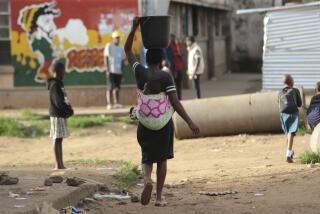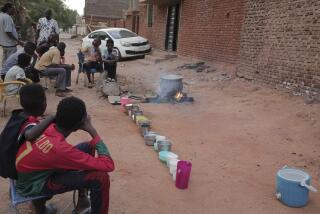World’s ‘Silent Emergency’
- Share via
Your editorial (Dec. 21), “Silent Emergency,” speaks eloquently to the work UNICEF is doing to reduce infant mortality in the Third World. But, I wonder who really knows what the conditions are that affect children and that result in so many needless deaths?
In a survey of leaders from across the United States in government, business, the news media, private associations, and community organizations, the Public Agenda Foundation tested the level of knowledge and understanding of causes of infant mortality in the developing world. What they learned can be summarized as follows:
--Only about 4% of our leaders are aware of what the United Nations Childrens Fund calls GOBI, a collection of simple, low-cost interventions--Growth monitoring, Oral rehydration, Breast feeding and Immunization shots--that can save lives and be used easily by parents.
--Most of our leaders are not aware that 40,000 children die every day; they think the number is much lower.
--Many did not know that smallpox has been largely eradicated; 39% thought it was still a major cause of death in the developing world.
--Large numbers of our leaders were not aware that polio, tuberculosis, measles, and diphtheria are still major causes of infant mortality in the developing world, or that effective immunization campaigns are being launched globally to address the problem.
The results of the Public Agenda Foundation’s survey also indicated that when informed of the high mortality rate in the developing world and what UNICEF and other agencies are doing to redress this and attendant problems, community, business, policy and media leaders strongly support these efforts and show real optimism that they will ultimately be successful.
Of course the survey was much more extensive and covered a wider range of topics and attitudes than what I could include here. What is significant to me is that when people know what the real conditions are, what can be done, what is being done, they will support efforts to improve the chances of survival for children everywhere.
UNICEF’s “The State of the World’s Children” report contains not only an exhaustive amount of information as to what those conditions are, but also a thorough review of what UNICEF, as just one of many development organizations, is doing to address them.
Your editorial serves not only to better inform our leaders and ordinary citizens of what can be done through immunization, oral rehydration, growth monitoring and the like, but it also celebrates with us UNICEF’s 40 years of service to children everywhere.
H. CANDLER MILLER
Director, Western Region
U.S. Committee for UNICEF
Los Angeles
More to Read
Sign up for Essential California
The most important California stories and recommendations in your inbox every morning.
You may occasionally receive promotional content from the Los Angeles Times.










